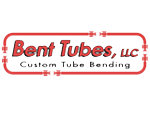Frequently Asked Questions
This section is created so you can see the questions and answers to some of the most common inquiries received about your product(s) or service(s).
Q. Does VAD have a hose that meets ABS requirements?
Yes, VAD (Parker) has the following hoses which meet the ABS Type Approval and Product Design Evaluation under 1998-1999 ABS Rules 4/6.9.14:
77C sizes -6 to -32 with 71 series fittings
221FR sizes -5 to -16 with 26 series fittings
451TC sizes -4 to -16 with 43 series fittings
471 sizes -6 to -16 with 43 series fittings
772 sizes -6 to -32 with 71 series fittings
782 sizes -12 to -24 with 78 series fittings
78C sizes -12 to -32 with 78 series fittings
792 sizes -12 to -20 with 79 series fittings
Intended service: Fuel Oil, Lubricating Oil, Hydraulic Fluid, Water, and Air Additional information can be found at the ABS web site, http://www.eagle.org
Q. What is the normal shelf life on my hose?
Parker Hannifin Hose Products Division places a maximum shelf life of 40 quarters (10 years) from the date of manufacture on elastomer hose if certain conditions are met.
This applies prior to installing fittings, and the hose must be stored properly. The best container to store hose is the original shipping carton. This may be either a box or a reel. Hose stored in a box should have the ends of the hose capped if possible. Hose stored on a reel should have its plastic wrapping kept in tact. All containers should be kept away from ozone (electrical discharges), water or extreme humidity, corrosive chemicals, ultraviolet radiation (direct sunlight), and kept at a temperature of 100°F (38°C) or less.
It is suggested that the hose be used on a first in, first out basis depending on the manufacturing date on the hose.
For further information pertaining to age control of hydraulic hose, consult SAE specifications J1273 and J517 in the latest copy of the SAE Handbook.
Q. How do I measure “Minumum bend” radius for my hose application?
A. Minimum Bend Radius

The minimum bend radius is measured from the inside edge of the hose to the centerline of the bend.
One way to check the bend radius of a hose assembly is with a cardboard template.
- •Cut a piece of cardboard to the minimum bend radius of the particular hose you want to check, and hold the template against the inside of the hose bend.
- •If the hose bend is the same size or larger than the radius on the template, the bend is okay.
- •If not, the bend radius is too small.
NOTE: Exceeding the rated minimum bend radius can shorten hose life considerably.
Q. What Is Maximum Working Pressure?
A. It is vital to the safety of anyone using our products that all confusion be eliminated, as to the meaning of MAXIMUM WORKING PRESSURE, compared to certain other pressure values which they may find or calculate.
The primary rule is that maximum working pressure really is maximum working pressure. In order to clarify the whole situation once and for all, the definitions for this and the other pressures are set forth below, based upon the "Hose Handbook" published by the RMA and upon SAE Specifications J517 and J343. As an example for purposes of clarity, numerical values are given for Parker 421-8 hose and hose assemblies. Do not use these values for other sizes and types.
Working Pressure: (2000 psi) The maximum pressure to which the hose assembly will be subjected, including momentary surges in pressure which can occur in service.
**Caution: Test pressures described below, are to be applied to the hose or hose assembly only under laboratory or inspection conditions with proper safety precautions against damage or personal injury.
Impulse Test Pressure: (2500 psi) The test pressure applied to the hose assembly at least a specified number of times (150,000) to establish whether it would have performed satisfactorily in normal usage at maximum working pressure (2000 psi). This is a destructive test and the sample is destroyed.
Proof Test Pressure: (4000 psi) The steady test pressure applied to the hose or hose assembly once for 30 to 60 seconds to get an indication of the reliability at maximum working pressure (2000 psi). This is a nondestructive test and the hose or hose assembly can be used.
Leakage Test Pressure: (5600 psi) The steady test pressure applied to a hose assembly not over 30 days old for a period of five minutes (twice) to establish whether it might eventually have leaked between hose and hose fitting in normal usage at maximum working pressure (2000 psi). This is a destructive test and the sample is destroyed.
Minimum Burst Test Pressure: (8000 psi) The pressure to which a hose assembly not over 30 days old is subjected once and momentarily, with the pressure raised from zero in a period of 15 to 30 seconds, to establish the absence of gross flaws which do not require an impulse test to detect. This is a destructive test and the sample is destroyed.
Actual Burst Test Pressure: (approximately 10,000 psi) The pressure at which a hose assembly actually fails if the preceding test is carried higher, to study the mode and pressure of failure for indicators as to what the performance would have been in normal usage at maximum working pressure (2000 psi). This is a destructive test and the sample is destroyed.
Uninformed personnel may use a hose assembly in actual service at some pressure just below any one of the test pressures listed above. The degree of hazard increases astronomically in going from the impulse test pressure up to the actual burst test pressure, but in all cases the result is a hose assembly which is over-loaded, unsafe and beyond all possibility of warranty.
***The Maximum Working Pressure = The Maximum Working Pressure.***
For More Information
Contact Us At: (715) 524-6520 or vadwebsales@vadtek.com


